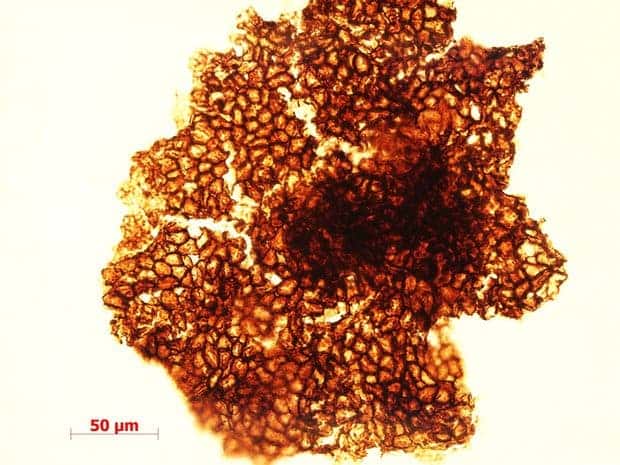A new discovery may place the first appearance of complex life on Earth a full billion years earlier than previously thought. The scientific community is divided on the value of the find, some hailing it as rock-solid evidence while others dismiss it as inconclusive.

Image credits Maoyan Zhu/AFP.
We know that life on our planet first appeared billions of years ago. But, for most of this time it only existed as primitive, single-cell prokaryotic (cells without a nucleus) organisms. Somewhere along the line, these cells banded together into colonies, the first multi-cell organisms. Later, they turned eukaryotic (developed a nucleus): every plant, animal, even fungi can trace their lineage back to that one moment. So finding out when it happened is kind of a big deal.
There is however quite a long period of time between the appearance of prokaryotic colony organisms and truly complex life, with differentiated eukaryotic cells forming single coherent organisms. Scientists sometimes call it the “boring billion,” because nothing seems to have been going on from an evolutionary point of view. A paper published in the journal Nature Communications describes newly-discovered fossils made up of several cells that seem to form a single structure. The discovery could mean that complex life evolved on Earth more than 1.5bn years ago, much earlier than current evidence suggests.
“Our discovery pushes back nearly one billion years the appearance of macroscopic, multi-cellular eukaryotes compared to previous research,” said Maoyan Zhu, professor at the Nanjing Institute of Geology and Palaeontology.
The fossils were found in the Yashan region of Hebei province in China. Zhu and his colleagues found 167 measurable fossils, one third of them forming one of four regular shapes, indicating a level of organization and complexity typical of eukaryotic organisms. The largest specimen was 30x8cm (11.81×3.14 inches.)
“[The fossils are] compelling evidence for the early evolution of organisms large enough to be visible with the naked eye”, said Zhu.
“This totally renews current knowledge on the early history of life.”
The earliest eukaryotic organisms of comparable size previously found were oceanic soft-bodied creatures, who lived some 600 million years ago. Zhu’s finds predate these by nearly one billion years. Phil Donoghue, University of Bristol paleobiology professor described the discovery as a “big deal.”
“They are not the oldest eukaryotes, but they are certainly the oldest demonstrably multicellular eukaryotes,” he said.
He also added that their existence proves “oxygen levels were sufficiently high to allow for such large organisms to subsist”.
However, Zhu failed to convince a large part of the scientific community.
“There is nothing here to suggest that the specimens are eukaryotic, as opposed to bacterial,” said senior researcher in the University of Oxford’s department of zoology Jonathan Antcliffe.
Antcliffe believes these fossils were loose colonies of bacterial cells, not single organisms. He argues that multicellular organisms structure themselves in three-dimensional forms, to limit the number of cells that come in direct contact to the environment.
“[A 3D shape is] critically important for function because it introduces transport problems for oxygen, nutrients, and signalling molecules,” Andrew Knoll of Harvard University explained in a paper on the origins of complex life.
Abderrazak El Albani, a researcher at the University of Poitiers in France, also calls into question the level of detail in Zhu’s study.
“[It is] absolutely insufficient to tell us if these organisms were multicellular, eucaryotes or complex”.
There has always been a lot of controversy on this topic. El Albani himself published a study in 2010, claiming he had discovered the remains of 2.1bn-year-old cell colonies in Gabon. His paper has been widely challenged, including by Zhu and Antcliffe, who described it as “largely discredited”.
The full paper, titled “Decimetre-scale multicellular eukaryotes from the 1.56-billion-year-old Gaoyuzhuang Formation in North China” has been published online in the journal Nature Communications and can be read here.


